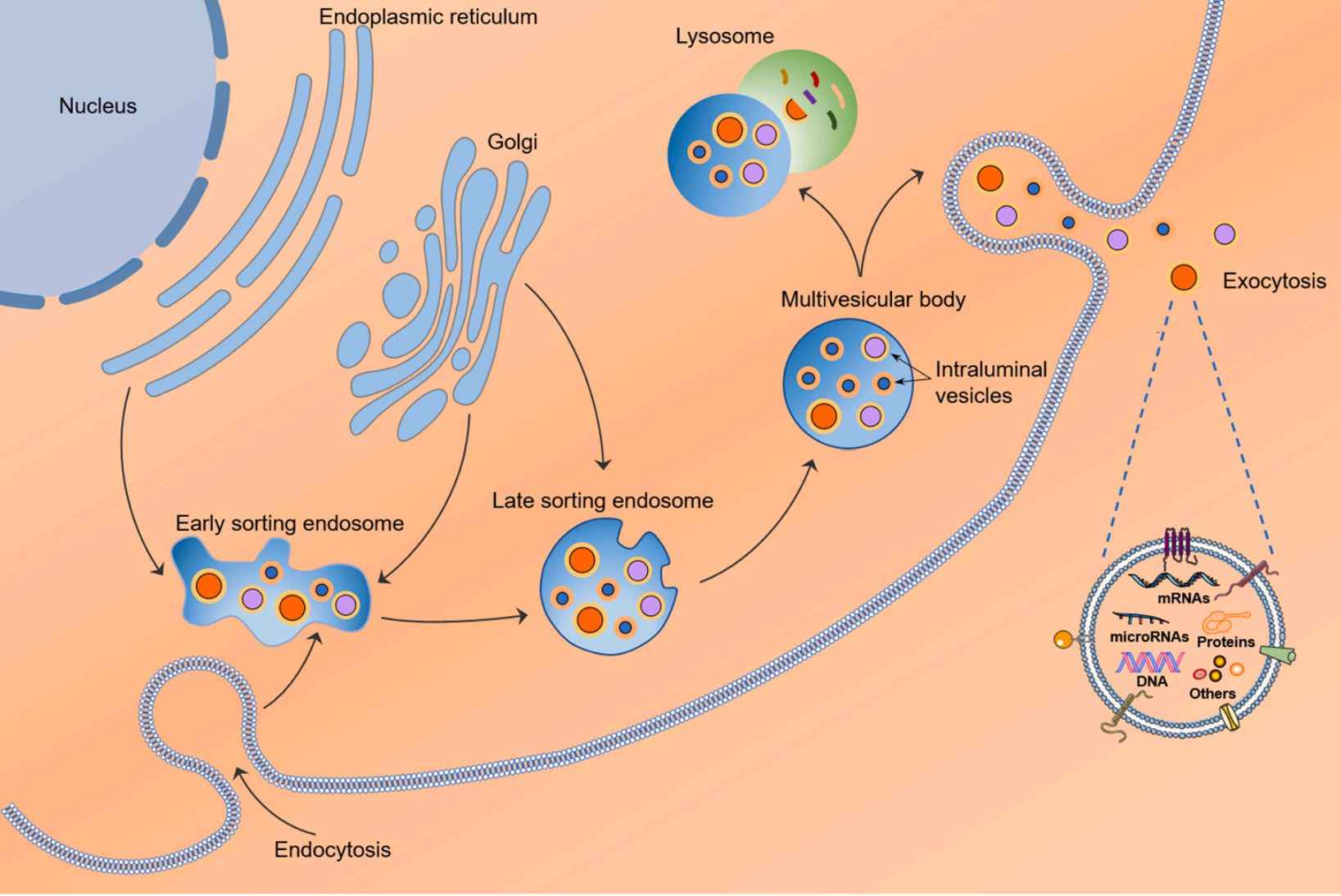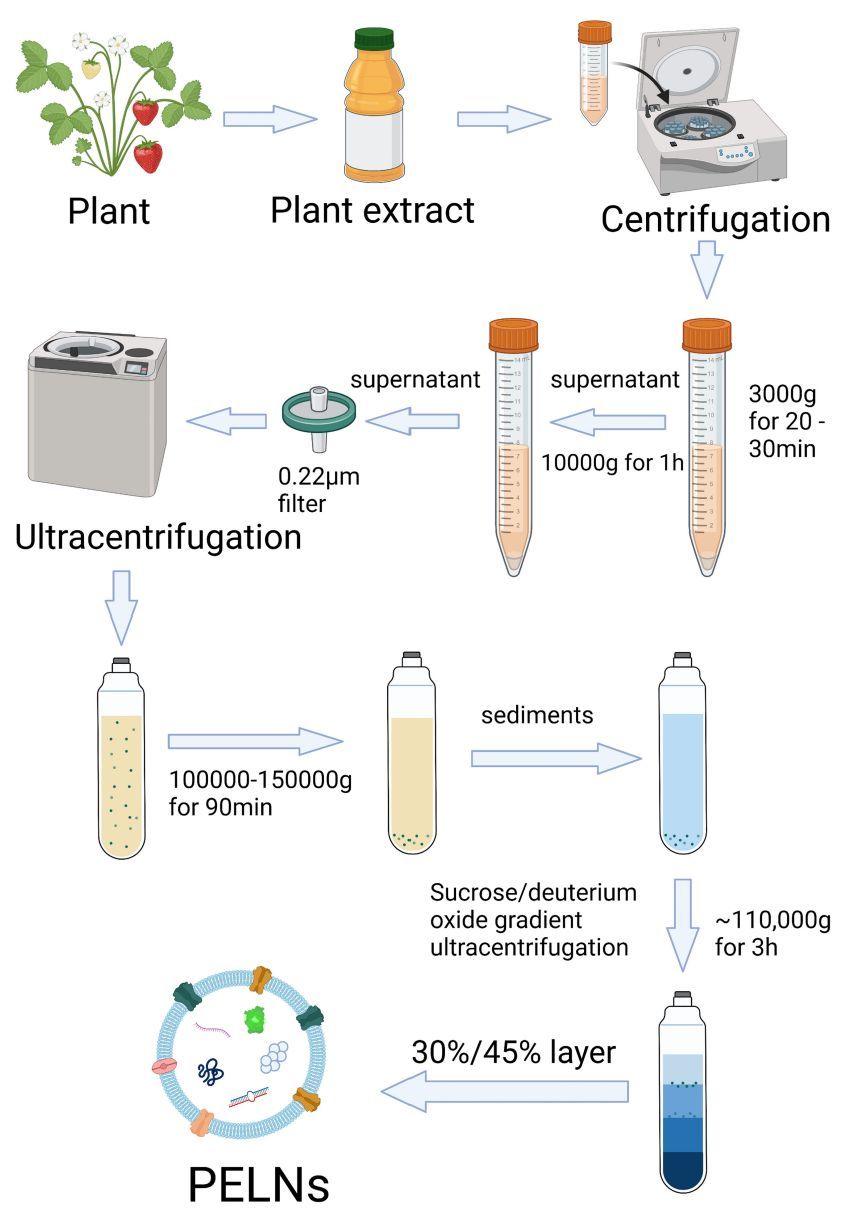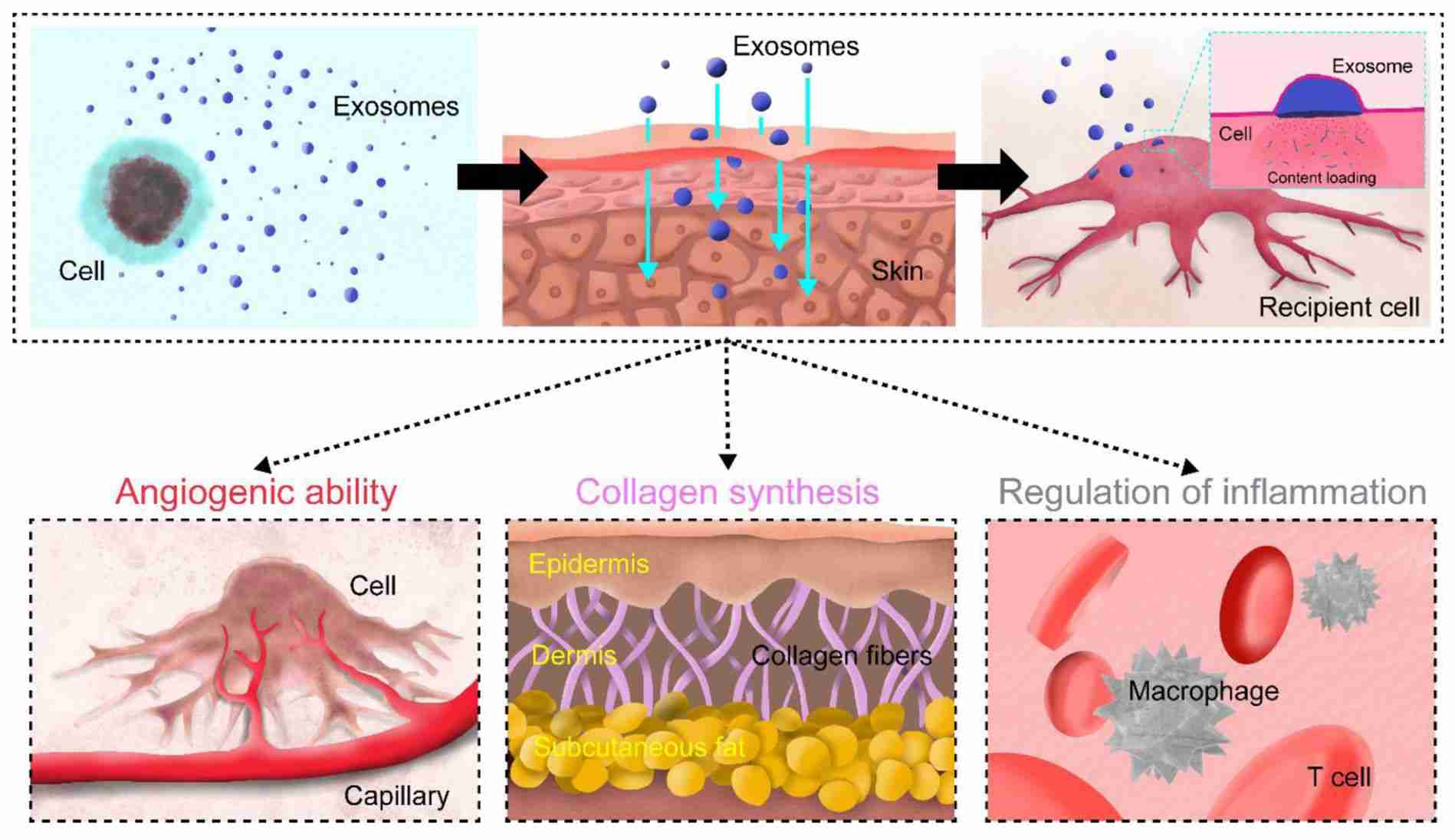Plant-derived Exosomes for Skin Care
Plant-derived exosomes are tiny natural particles that influence plant development and protect plants from pathogens. Recently, plant-derived exosomes have gained attention for their potential to restore and improve skin.
Why Plant-derived Exosomes can be used for Skin Care?
Plants produce various secondary metabolites such as alkaloids, polyphenols, flavonoids, quinones, and terpenoids when subjected to environmental stresses to defend against pathogens or adapt to their surroundings. These secondary metabolites are often used to provide nutrition or specific benefits to humans. In particular, plant-derived natural substances, such as exosomes, are widely used as cosmeceutical materials for their beneficial effects on human skin, such as anti-aging, moisturizing, whitening, and regeneration.
Biogenesis of Plant-derived Exosomes
The formation and secretion of plant-derived exosomes is a multistep cellular process. First, the plasma membrane invaginates to form early sorting endosomes (ESE) that encapsulate extracellular components and cell membrane proteins. Second, ESEs mature into late-sorting endosomes (LSEs), and LSE membranes invaginate to form multivesicular bodies (MVBs), the MVB pathway being a critical process for the formation of plant-derived exosomes. Finally, MVB fuses with the plasma membrane to release intraluminal vesicles (ILVs) for intercellular communication. In addition, plant-derived exosomes can also be expelled into the plastid via extracellular vesicle-positive organelles (EXPO) in plant cells.
 Figure 1. The biogenesis and composition of exosomes. (Yi Q, et al., 2023)
Figure 1. The biogenesis and composition of exosomes. (Yi Q, et al., 2023)
Isolation of Plant-derived Exosomes
Isolation of plant-derived exosomes is mainly based on differential centrifugation. Plant-derived exosomes can be isolated from fruits, flowers, and vegetables. The steps of the conventional method are as follows:
1. The plant is ground into juice and the juice is filtered through a strainer.
2. The collected juice is subjected to differential centrifugation at 3000 x g and 10,000 x g. 2. The supernatant is then centrifuged.
3. The supernatant is then subjected to high-speed centrifugation (100,000-150,000 x g).
4. Since the plant-derived exosomes obtained after differential ultracentrifugation are usually contaminated with nucleic acid and protein clumps, further purification is required by sucrose/deuterium oxidation gradient ultracentrifugation (110,000 × g).
 Figure 2. Scheme for isolation of plant-derived exosomes. (Zhang Z, et al., 2022)
Figure 2. Scheme for isolation of plant-derived exosomes. (Zhang Z, et al., 2022)
Exosomes in Dermatology
Exosomes contain a variety of biomolecules that help promote skin repair and regeneration. Previous studies have confirmed the therapeutic benefits of exosomes for skin defects such as wounds and aging. For example, it has been found that bioengineered exosomes loaded with miRNA-542-3p promote cell proliferation, collagen synthesis, and wound closure in a mouse model. In addition, exosomes can deliver a variety of bioactive compounds to skin cells, thereby effectively slowing down skin aging and inhibiting photoaging features. In non-invasive treatments, exosomes are incorporated into topical creams, serums, oils, and masks to cover and protect the skin. Exosomes can also be incorporated into bioactive polymeric materials such as hydrogels for sustained release, pH maintenance, and enhanced regenerative potential.
 Figure 3. Schematic showing skin regenerative abilities of the exosome. (Yang GH, et al., 2021)
Figure 3. Schematic showing skin regenerative abilities of the exosome. (Yang GH, et al., 2021)
Plant-derived Exosomes for Skin Care
- Promoting Transdermal Absorption
Transdermal absorption is a major bottleneck in cosmetic skin care, limiting the effective utilization of many ingredients. One of the advantages of plant-derived exosomes is that they are inherently good transdermal systems, capable of penetrating deep into the stratum corneum. Plant-derived exosomes have a lipid bilayer, which is very similar to the liposomes commonly found in skin care products. For example, broccoli-derived exosomes have strong stratum corneum penetration and can encapsulate bioactive molecules that penetrate and distribute into the stratum corneum and dermis.
- Regulating Hyperpigmentation and Anti-Aging
Plant-derived exosomes have also been extensively studied in skin lightening and anti-aging. Studies have found that ginseng-derived exosomes provide anti-aging benefits to skin cells. Ginseng-derived exosomes ameliorate the aging phenotype of human skin fibroblasts by down-regulating molecules associated with aging and proteins related to melanin formation and ameliorating hyperpigmentation associated with aging of human melanocytes under UV exposure.
- Promoting Wound Healing and Skin Regeneration
Plant-derived exosomes have emerged as promising tools for promoting wound healing and skin tissue engineering. By delivering growth factors and miRNAs, plant-derived exosomes can initiate signaling pathways that promote cell migration, proliferation, and differentiation. These processes are critical for wound closure, epithelial regeneration, neurogenesis, and angiogenesis. For example, wheat-derived exosomes promote wound repair. Wheat-derived exosomes have a variety of CD markers on their surface and have strong proliferation and migration-promoting effects on endothelial, epithelial, and dermal fibroblasts.
Our Products
Creative Biostructure is dedicated to the research of plant-derived exosomes in the field of skincare. We provide one-stop exosome solutions from exosome isolation and characterization to exosome functional analysis. We also provide a series of high-quality exosome products to help clients explore the potential applications of plant-derived exosomes in cosmetics and medical aesthetics.
| Cat No. | Product Name | Source |
| PNE-FLP04 | PNExo™ Exosome-Lily | Exosome derived from Lily |
| PNE-FLD10 | PNExo™ Exosome-Daffodil | Exosome derived from Daffodil |
| PNE-FLA19 | PNExo™ Exosome-Azalea | Exosome derived from Azalea |
| PNE-FLM21 | PNExo™ Exosome-Morning glory | Exosome derived from Morning glory |
| PNE-FLA31 | PNExo™ Exosome-Amaryllis | Exosome derived from Amaryllis |
| PNE-FLC42 | PNExo™ Exosome-Begonia | Exosome derived from Begonia |
| PNE-FB13 | PNExo™ Exosome-Bilberry | Exosome derived from Bilberry |
| PNE-FA18 | PNExo™ Exosome-Apple | Exosome derived from Apple |
| PNE-FB34 | PNExo™ Exosome-Blueberry | Exosome derived from Blueberry |
| PNE-FB42 | PNExo™ Exosome-Banana | Exosome derived from Banana |
| PNE-FG69 | PNExo™ Exosome-Green Plum | Exosome derived from Green Plum |
| Exo-PDELN01 | HQExo™ Exosome-Garlic | Exosome derived from Garlic |
| Exo-PDELN02 | HQExo™ Exosome-Ginger | Exosome derived from Ginger |
| Exo-PDELN03 | HQExo™ Exosome-Onion | Exosome derived from Onion |
| Exo-PDELN04 | HQExo™ Exosome-Potato | Exosome derived from Potato |
| PNE-VL17 | PNExo™ Exosome-Lettuce | Exosome derived from Lettuce |
| PNE-VB13 | PNExo™ Exosome-Broccoli | Exosome derived from Broccoli |
| PNE-VC15 | PNExo™ Exosome-Cabbage | Exosome derived from Cabbage |
| Explore All Exosomes Isolated from Plants | ||
Creative Biostructure's exosome products are available for global delivery, please feel free to contact us for an official quote.
References
- Yi Q, et al. Current understanding of plant-derived exosome-like nanoparticles in regulating the inflammatory response and immune system microenvironment. Pharmacol Res. 2023. 190: 106733.
- Zhang Z, et al. The Emerging Role of Plant-Derived Exosomes-Like Nanoparticles in Immune Regulation and Periodontitis Treatment. Front Immunol. 2022. 13: 896745.
- Yang GH, et al. Overcome the barriers of the skin: exosome therapy. Biomater Res. 2021. 25(1): 22.
- Feng H, et al. Plant-Derived Exosome-Like Nanoparticles: Emerging Nanosystems for Enhanced Tissue Engineering. Int J Nanomedicine. 2024. 19: 1189-1204.
- Dad HA, et al. Plant Exosome-like Nanovesicles: Emerging Therapeutics and Drug Delivery Nanoplatforms. Mol Ther. 2021. 29(1): 13-31.
